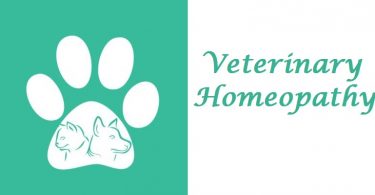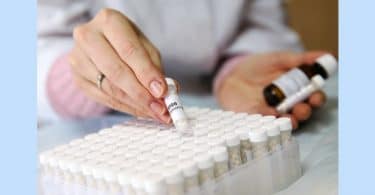In most cases, homeopathic practice employs medicines that have been rendered extremely dilute via the homeopathic potentisation process. There’s no getting away from the fact that biochemistry, as it’s currently understood, has a big problem with the biological activity of substances in extreme dilution. So, some form of objective and unbiased research into homeopathy that shows a positive effect is very valuable. What follows are summaries of some recent and notable research that has confirmed a positive effect from homeopathy.
Human Research
- Wiesenauer M, Haussler S, Gaus W. Pollinosis therapy with Galphimia glauca. Fortschritte der Medezin, 1983, 101, 17, 811-814. Using a randomised, placebo-controlled, double-blind, multi-centre design in this trial, 86 people suffering from hay fever were treated for 5 and a half weeks with either homeopathic Galphimia glauca 4X or placebo. Therapeutic success was seen in 83% of those using the Galphimia and 47% of those using placebo.
- Wiesenauer M, Gaus W, Haussler S. Treatment of Pollinosis with Galphimia glauca. Allergologie, 1990, 10, 359-363. 54 practitioners treated 201 people suffering from hay fever either with placebo or homeopathic Galphimia glauca. Assessment at the end of the 5 week treatment period found that nasal symptoms were cured or significantly improved in 77% of subjects using Galphimia versus 46% of those using placebo and eye symptoms were cured or significantly improved in 77% of subjects using Galphimia versus 51% of those using placebo.
- Wiesenauer M, Gaus W. Proof of the Effectiveness of a Homeopathic Preparation in Chronic Polyarthritis. Erzten Akt Rheumatol, 1991, 16, 1-9. In this randomised, double-blind clinical trial, 111 people being treated by 6 general practitioners for rheumatoid arthritis were given either placebo or a combination of homeopathic Berberis, Bryonia, Ledum, Nux vomica and Ledum. Using pain, stiffness, inflammatory signs, fatigue and a functional index to determine clinical outcomes, at the end of the 12 week treatment period it was found that the homeopathic combination provided superior results to those of placebo.
- Witt CM, et al. Homeopathic medical practice: long-term results of a cohort study with 3981 patients. BMC Public Health, 2005, 3, 5, 115. In this study, 3981 patients being treated in private homeopathic medical clinics in Germany and Switzerland were assessed for the effectiveness of their homeopathic treatment over a 2 year period. When compared to baseline assessments taken immediately before treatment had begun, the adults in the study experienced a reduction in disease severity of 52% and children by 64%.
- Yakir M, Kreitler S, et al. Homoeopathic Treatment of Premenstrual Syndrome. British Homoeopathic Journal, 1995, July, 84, 182-183. In a double blind randomised placebo controlled trial carried out in an Israeli hospital, 19 women suffering from clinically diagnosed PMS were treated with individualised homoeopathy or placebo. The homoeopathic treatment provided significant improvement over placebo.
- Yakir M, et al. Effects of Homeopathic Treatment in Women with Premenstrual Syndrome: a Pilot Study. British Homoeopathic Journal, 2001, 90, 3. 148-153. 20 women suffering from PMS were enrolled into this randomised, controlled, double-blind trial to receive one of 5 symptomatically selected homeopathic remedies, or placebo. Using daily menstrual distress scores before and at the end of the trial, improvement greater than 30% was experienced by 90% of those using the homeopathic medicine and 37.5% of those using the placebo.
Animal Research
- Viriato EP, et al, Study of high dilutions of copaiba oil on inflammatory process. Int J High Dilution Res 2009; 8, 26, 9-149. This trial was a collaborative effort by researchers from several Brazilian universities and was designed to test the hypothesis that Copaiba oil, homeopathically potentised to 30C from either mother tincture or triturate, is as effective as Indomethacin in reducing inflammation induced by carageenan, and also to determine if it was capable of influencing tissue granulation when compared to conventional treatment. The 30C potency from mother tincture and triturate both reduced inflammation by up to 73%, and Indomethacin reduced inflammation by 55%. In addition, 6C potencies of Copaiba oil were able to produce a 48% inhibition of granulation, compared to a 57% reduction from the use of Dexamethasone.
- Bellavite P, et al. Testing homeopathy in mouse emotional response models: pooled data analysis of two series of studies. Evid Based Complement Alternat Med, 2012;2012:954374. doi: 10.1155/2012/954374. Epub 2012 Apr 4.. In this data analysis carried out by researchers from the Department of Pathology and Diagnostics at Italy’s University of Verona, an assessment was made of previous work using homeopathically prepared Gelsemium against anxiety in mice, and comparing various homeopathic potencies of this material with solvent (negative) controls and diazepam (positive) controls. An analysis of this pooled data confirmed the original findings of both studies of a statistically significant association between homeopathically prepared Gelsemium and a reduction in the anxiety experienced by mice when confronted with a potentially anxiety producing situation.
In-Vitro Research
- Burbano RR, et al. Lymphocyte proliferation stimulated by activated human macrophages treated with Canova. Homeopathy, 2009, 98, 1, 45-8. In this study, researchers from the Universidade Federal do Pará in Brazil add to work previously done in this area by using a homeopathic mixture referred to as Canova (homeopathically potentised Aconitum napellus, Arsenicum album, Bryonia alba, Lachesis muta, Thuja occidentalis) to determine its effect on the mitotic index of phytohaemagglutinin-stimulated human lymphocytes. These lymphocytes were cultured in media containing Canova and their mitotic index was compared with lymphocytes cultured without it. The mitotic index is a measure of the proliferation status of a cell population. On analysis of the results it was found that the addition of Canova to the culture media was associated with an increase in the proliferation (mitotic) index.
- da Silva RMRJ, et al. Analysis of in vitro activity of high dilutions of Euphorbia tirucalli L. in human melanoma cells. Int J High Dilution Res, 2011, 10, 36, 183-193 Proceedings of the XXV GIRI Symposium and VIII CBFH; 2011, Sep, 04-07; Foz do Iguaçu (Brazil) 183. Brazilian researchers set out to determine what effects, if any, homeopathically prepared potencies of latex and tincture of Euphorbia tirucalli have on the proliferation of cultured human melanoma cells. The cultured cells were exposed to 5C, 15C and 30C homeopathic potencies of the latex and mother tincture as well as an ethanol and water control, and monitored via MTT assay for 24 to 72 hours. Compared to the control, all of the test solutions appeared to exert a proliferation inhibition, with the Euphorbia tirucalli 30C prepared from mother tincture exhibiting the strongest inhibition (32.1%).






